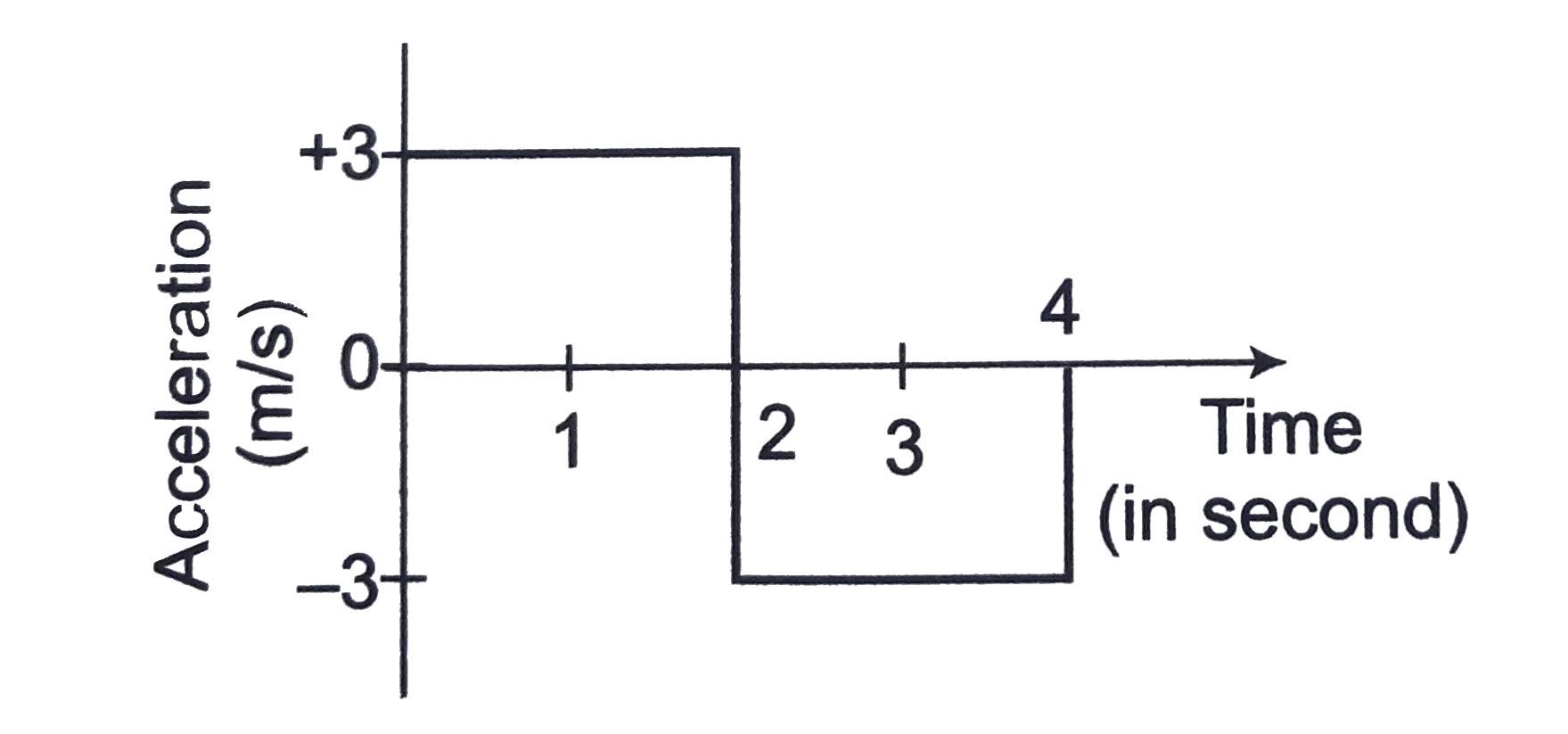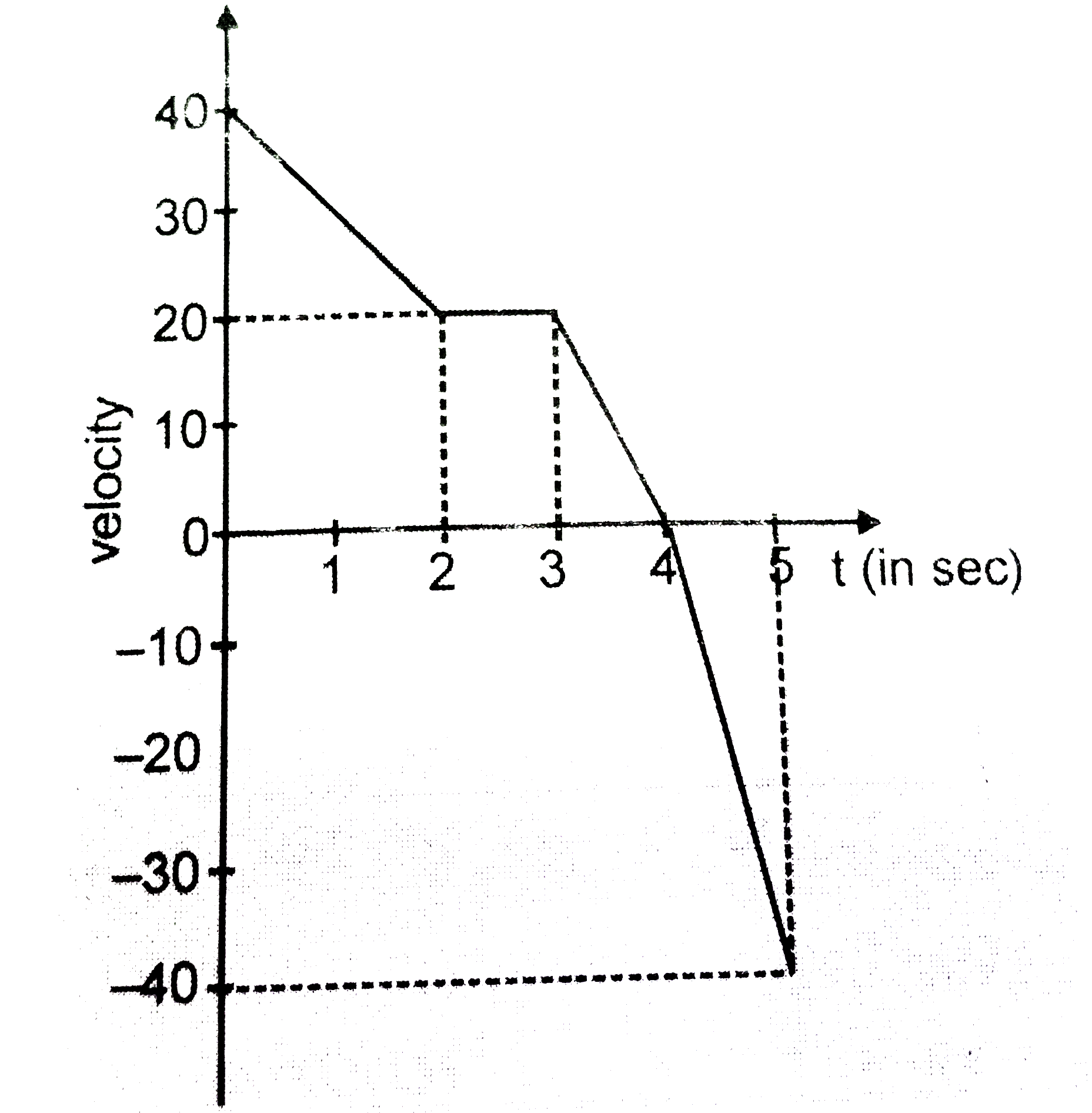A particle, starting from rest, moves in a straight line with constant acceleration a0 for a time interval t0.Then is accelerates at a constant rate 2a0 for time interval 2t0 .The distance travelled by the particle in time 3t0 from the starts is S . Then Sa0t20=
To solve the problem step by step, we will analyze the motion of the particle during the two phases of its movement.
Step 1: Calculate the distance traveled in the first phase (0 to t₀)
The particle starts from rest and moves with a constant acceleration a0 for a time interval t0.
Using the equation of motion:
s1=ut+12at2
Here, u=0, a=a0, and t=t0.
Substituting the values:
s1=0⋅t0+12a0t20=12a0t20
Step 2: Calculate the velocity at the end of the first phase
The final velocity v at the end of the first phase (at t=t0) can be calculated using:
v=u+at
Substituting u=0, a=a0, and t=t0:
v=0+a0t0=a0t0
Step 3: Calculate the distance traveled in the second phase (t₀ to 3t₀)
In the second phase, the particle accelerates at 2a0 for a time interval of 2t0.
The initial velocity for this phase is v=a0t0, and the acceleration is 2a0.
Using the equation of motion again:
s2=ut+12at2
Where u=a0t0, a=2a0, and t=2t0.
Substituting the values:
s2=(a0t0)(2t0)+12(2a0)(2t0)2
Calculating each term:
s2=2a0t20+12⋅2a0⋅4t20=2a0t20+4a0t20=6a0t20
Step 4: Calculate the total distance traveled (S)
The total distance S traveled by the particle in the time interval 3t0 is the sum of the distances from both phases:
S=s1+s2=12a0t20+6a0t20
Combining the terms:
S=12a0t20+122a0t20=132a0t20
Step 5: Calculate Sa0t20
Now, we need to find Sa0t20:
Sa0t20=132a0t20a0t20=132
Final Answer
Sa0t20=132
The particle starts from rest and moves with a constant acceleration a0 for a time interval t0.
s1=ut+12at2
Here, u=0, a=a0, and t=t0.
s1=0⋅t0+12a0t20=12a0t20
The final velocity v at the end of the first phase (at t=t0) can be calculated using:
v=u+at
Substituting u=0, a=a0, and t=t0:
v=0+a0t0=a0t0
In the second phase, the particle accelerates at 2a0 for a time interval of 2t0.
s2=ut+12at2
Where u=a0t0, a=2a0, and t=2t0.
s2=(a0t0)(2t0)+12(2a0)(2t0)2
Calculating each term:
s2=2a0t20+12⋅2a0⋅4t20=2a0t20+4a0t20=6a0t20
The total distance S traveled by the particle in the time interval 3t0 is the sum of the distances from both phases:
S=s1+s2=12a0t20+6a0t20
Combining the terms:
S=12a0t20+122a0t20=132a0t20
Now, we need to find Sa0t20:
Sa0t20=132a0t20a0t20=132
Sa0t20=132
Similar Questions
Knowledge Check
- Question 1 - Select One
A particle starts from rest at t=0 and moves in a straight line with an acceleration as shown below. The velocity of the particle at t=3 s is
 A2m/sB3m/sC4m/sD6m/s
A2m/sB3m/sC4m/sD6m/s - Question 2 - Select One
A particle starts from rest at t=0 and moves in a straight line with an acceleration as shown below. The velocity of the particle at t=3 s is
 A5m/s2B6m/s2C10m/s2D15m/s2
A5m/s2B6m/s2C10m/s2D15m/s2 - Question 3 - Select One
If the distance s travelled by a particle in time t is s=asint+bcos2t, then the acceleration at t=0 is
AaB−aC4bD−4b
A particle starts motion from rest and moves along a straight line. Its acceleration-time graph is shown. Find out speed of particle at t=2s and at t=3s.
 View Solution
View SolutionA particle starts motion from rest and moves along a straight line. Its acceleration-time graph is shown. Find out speed of particle at t=2s and at t=3s.
 View Solution
View SolutionThe acceleration of a particle is increasing linearly with time t as bt .The particle starts from the origin with an initial velocity v_(0) The distance travelled by the particle in time t will be
View SolutionThe acceleration of particle is increasing linearly with time t as bt. The particle starts from the origin with an initial velocity v0. The distance travelled by the particle in time t will be.
View SolutionThe acceleration of a particle is increasing linearly with time t as bt. The particle starts from the origin with an initial velocity v0. The distance travelled by the particle in time t will be
View Solution

